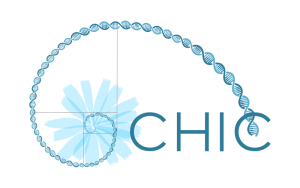Stakeholder engagement
In accordance with the principles of Responsible Research and Innovation (RRI) to which the CHIC project is committed, the overall objective of WP6 is to engage stakeholders in the innovation process in order to consider their viewpoints on the planned innovation from the very beginning of the project. The WP uses various measures to ensure stakeholder engagement, the most important of which are described below. However, it should be noted that for all these methods, the same basic rules apply, as described in the Strategy Document for Stakeholder Engagement, Communication and Transparency (STECT, available here).
A first measure to ensure stakeholder engagement in the CHIC project is establishing and engaging the Stakeholder Advisory Group (SAG), led by EPSO, the European Plant Science Organisation. The initial SAG was invited to the first project meeting in February 2018. At this and the subsequent meeting in November 2018, the SAG made suggestions to make project activities more useful for farmers, industries and end-users. The ensuing discussions with the project partners helped to clarify how each of the participants could contribute to increasing the outcome and impact of CHIC.
In the meantime, the WP6 team continued to seek for additional SAG members, aiming at an SAG which is composed of 2-4 entities from each of the four subgroups representing industries, farming, academia and end-users.
The SAG already includes four industry representatives (EuroSeeds, FoodDrinkEurope, Suedzucker and Portugal Foods), two entities from farming (Association of Dutch chicory growers and CopaCogeca), 2 reseachers from academia (IGZ Grossbeeren, chairing the EPSO Working Group on Horticulture and INRA, chairing the EPSO Working Group on Agricultural technologies), and one from the end-user side (from the European Economic and Social Council). The list of members can be found here.
New stakeholders invited include the Head of the Science Policy Programme of EMBO for academia, the Belgian farmer organisation ‘Boerenbond’, and the European Public Health Organisation (EUPHA) for end-users.
The SAG is invited to the next project meeting in March 2020 to further advice on the project and among other tasks, help preparing the stakeholder consultations for 2020 and 2021 (see below).
A second measure is the social scientific research into the factors that might have an impact—positive or negative—on the acceptability of the chicory plants and products developed within CHIC. This includes in-depth interviews with selected experts and stakeholders across the chicory value chain, a historical case study on the first attempts in the 1990s to carry out field tests of GM chicory in Europe, and various other steps. Based on this knowledge, a third important measure of stakeholder engagement in CHIC project are stakeholder consultations (SHCs). SHCs will take place at three different levels, each involving different groups of stakeholders. National SHCs will take place in each of the important chicory growing countries, i.e. in Belgium, France, and the Netherlands, between May and July 2020. Focusing on business perspectives, they will bring together actors from across the value chain. The National SHCs will be followed by a Regional SHC, scheduled for autumn 2020. This regional consultation will focus on the dimension of risk. It will therefore invite stakeholders from various interest groups and NGOs (including environmental and consumer organizations) as well as agencies concerned with the regulation of GE plants. Finally, two consecutive EU-level SHCs will bring together participants of the previous consultation rounds, and also involve other perspectives as well as EU-level stakeholder representatives.


 This project has received funding from the EU Horizon 2020 research & innovation programme under grant agreement N. 760891.
This project has received funding from the EU Horizon 2020 research & innovation programme under grant agreement N. 760891.

